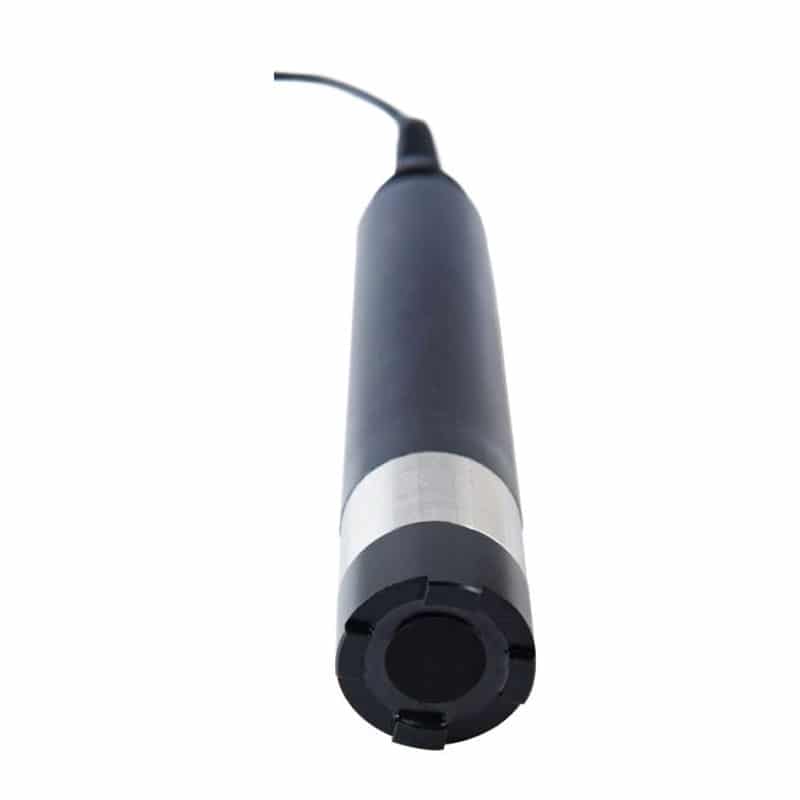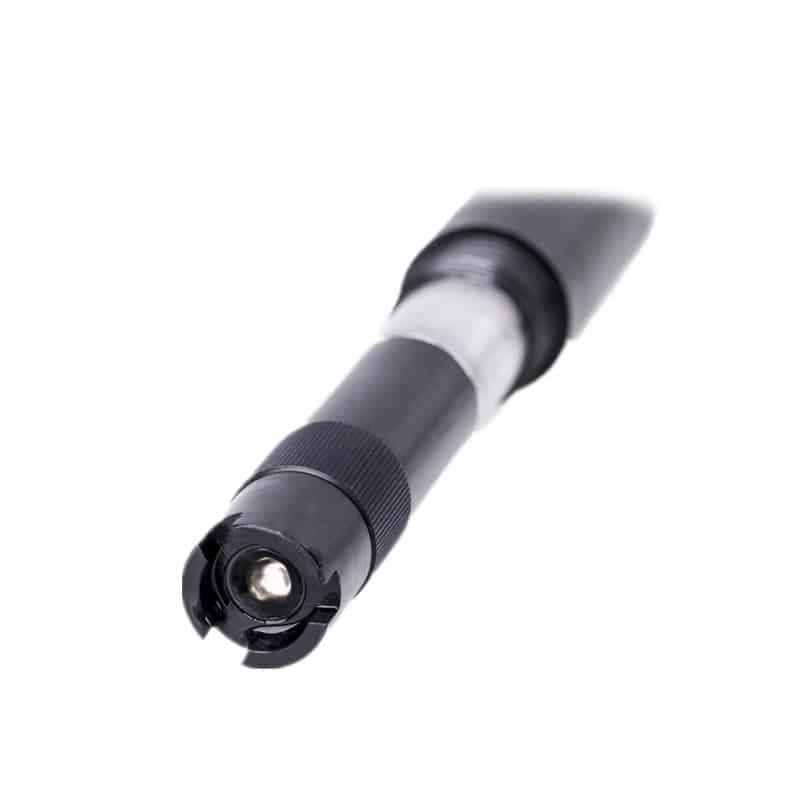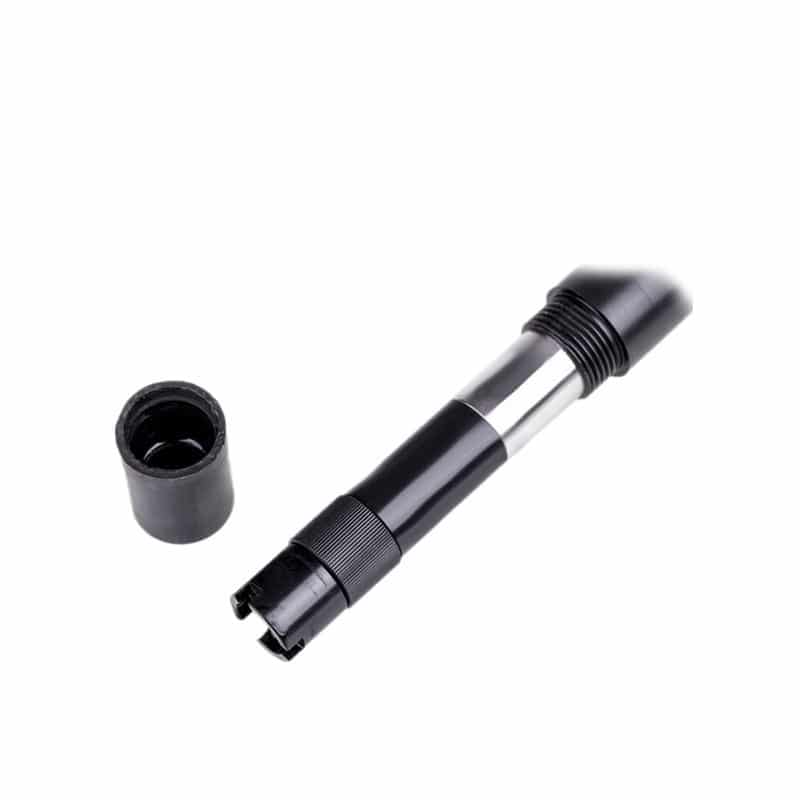Dissolved oxygen probes work by measuring the amount of oxygen that diffuses through a permeable (or semi-permeable) membrane into the probe (sensor). Once the oxygen enters the sensor, a chemical reduction reaction occurs, producing an electrical signal. This signal is read by the DO probe and displayed on the meter.
There are two main sources of dissolved oxygen (DO): the atmosphere (molecular oxygen) and photosynthesis, which is a by-product. Most aquatic organisms need dissolved oxygen to survive, which is important for chemical processes in the aquatic environment. Depending on the industry you work in, it will depend on the reason you are testing for DO and what DO probe is best for you.
While there are many ways to test for DO, if you are testing in the lab or in the field (wastewater treatment), the easiest way to test for DO in water is with an electroanalytical or electrochemical dissolved oxygen sensor probe.
How do dissolved oxygen probes work?
Dissolved oxygen probes handle redox (redox) reactions, providing continuous and real-time measurements. Because they have an applied voltage, most DO probes require a “warm-up time” before use to polarize the electrode before measuring DO in water.
After connecting the DO probe to the meter, the electrode sensor (DO probe) is immersed in the solution being measured. When the DO sensor is connected to the meter, a voltage can be applied to the internal electrode. Oxygen (O2) molecules arrive at the membrane and reach the electrode by diffusion through the permeable/semi-permeable membrane. A small current flows between the electrodes (cathode and anode). The amount of current flowing between the electrodes is proportional to the O2 concentration in the solution. The amount of DO in the solution is measured by measuring the current using a calibrated meter.
However, the dissolved oxygen sensor does have drawbacks when performing DO measurements. It consumes an amount of O2 from the solution equal to the amount diffused in the sensor. As a result, the amount of O2 in the vicinity of the DO probe decreases and therefore, if a current probe is used, the DO probe must be stirred in solution in order to obtain an accurate measurement.
Electric dissolved oxygen sensor probe
The raw electric DO probe generates a voltage as O2 diffuses through the probe membrane. The thin semi-permeable membrane allows oxygen to pass through and prevents anything else from passing through.
As O2 passes through the membrane and the electrolytic solution to the electrode, it dissolves inside the probe cap containing the buffered electrolyte, allowing the O2 to react with the cathode (platinum electrode), thereby gaining an electron. It is this electron that is given to the O2 molecule, thus creating a voltage between the anode (silver chloride electrode) and the cathode inside the DO probe.
Once the current is detected by the DO probe, the connected meter can convert the reading to a DO concentration.
Polar spectrum dissolved oxygen sensor probes
The polarimetric DO probe also contains a thin semi-permeable membrane, however, a voltage is applied between the anode and cathode of the DO probe. When O2 reaches the cathode, an electron is added to the O2 molecule, creating a current. It is this voltage that drives the O2 reaction and determines the DO concentration.
At Apure, we offer laboratory grade and industrial DO current probes for a wide range of applications.
How do I use a lab-grade DO probe?
A laboratory grade DO probe consists of a PTFE membrane, a cathode and an anode immersed in an electrolyte. During use, O2 molecules diffuse through the DO probe membrane at a continuous rate. Once the O2 molecules pass through the membrane, they are reduced at the cathode, resulting in a small voltage. When no O2 molecules are present, the DO meter will read the voltage as 0 mV (millivolts). As the number of O2 molecules increases, the DO probe reading increases as well.
Once your probe has recorded the voltage, it can be easily read with a multimeter or analog-to-digital converter.
Laboratory grade DO probes can be fully submerged in fresh or salt water indefinitely up to the SMA connector.
How do I use an industrial DO probe?
An industrial DO probe works on the same principle as a laboratory grade probe, but it consists of a silicone membrane instead of a PTFE membrane. If you are using an industrial DO probe, you can connect it to a DO circuit and an RTD circuit via a carrier board, and for industrial processes, you can connect the DO probe to a DO transmitter.
Industrial DO probes can also be fully submerged in fresh or salt water indefinitely up to the tinned lead connector.
What can affect dissolved oxygen in water?
When measuring dissolved oxygen, it is important to consider the factors that may affect the measurement. These include
- Temperature
- Salinity
- Barometric pressure
- Humidity
Apure dissolved oxygen probe(DO sensor) products
Summary
The dissolved oxygen probe works by measuring the amount of oxygen that diffuses through the membrane into the sensor. Once oxygen enters the sensor, a chemical reduction reaction occurs, producing an electrical signal. The signal is read by the DO probe and displayed on the meter.
If you want to know more about other water quality parameters, water quality measurement, characteristics or water quality analysis products, please feel free to contact our professional team in Apure.
More on other water quality articles:
What Is Municipal Water?
Distilled Water vs Purified Water: What’s The Difference?
Solution of water pollution
Main water quality indicators





